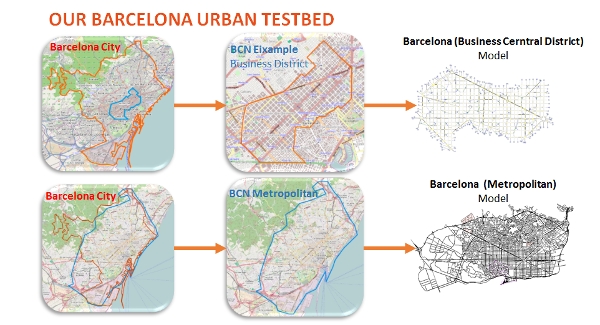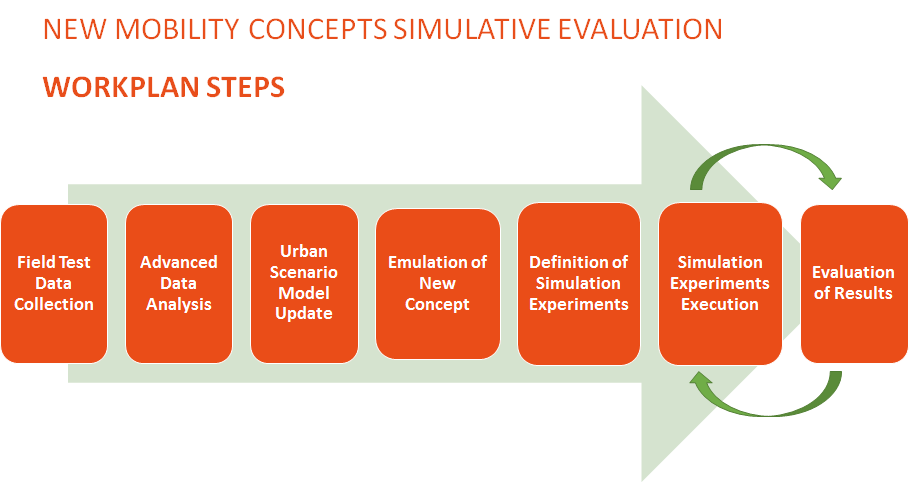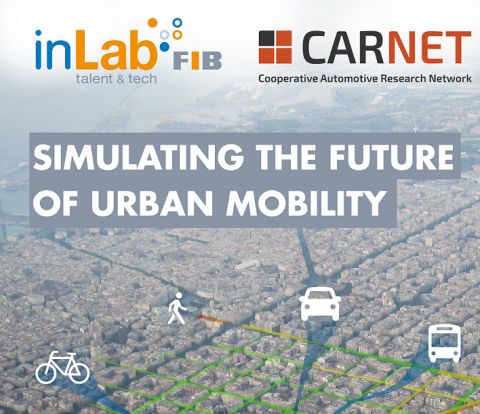Simulating the future of urban mobility
- Big Data, Simulador Aimsun
Home » Success Stories »
Description
inLab FIB participates in the CARNET initiative (Cooperative Automotive Research Network), an open hub of knowledge around mobility and automotive initiated by SEAT, Volkswagen Group Research and the UPC, simulating new concepts of urban mobility.
Sustainable mobility is not just a technological issue, the new automotive technologies and applications of Information and Communication Technologies (ICT), combined with the new social paradigm shift that is beginning to replace vehicle ownership with the use of the vehicle, make it possible for any user to access mobility services that allow them to go from any origin to any destination at all times.
In order to simulate the urban mobility of the future, we use specialized traffic simulators at the macro, meso or microscopic level and models of the city of Barcelona to realistically emulate the new mobility concepts, reproducing the city’s traffic dynamics.

This also allows us to measure the future impact of different levels of penetration of new concepts or vehicles. For example, in one of the projects, Connected Car, carried out with Volkswagen Research, 10,000 equipped vehicles were emulated, acting as mobile traffic sensors, which coexisted with the rest of the city’s vehicles. The simulation allowed us to assess the quality of the information collected by this type of vehicle in order to estimate the state of the city’s traffic, opening the door to future lines of research.
In another of the projects, Urban Co-Car, work has been done with a fleet of vehicles that allow dynamic sharing of journeys in order to absorb the 10% of journeys that are currently made by private vehicle. This project focuses on the analysis and evaluation of the impact of a shared vehicle system for multiple users, exploiting efficiently, flexibly and profitably the fact that their routes coincide completely or in some section. The project answers questions such as: how do you access the system?, how is the fleet managed?, how are services assigned?, how are routes made more flexible?
Up to 5,000 connected vehicles will be emulated in the BIG IoT European project, currently underway and in which SEAT is also participating.
All these projects share a common methodology that includes extending the simulation environment to emulate the new concepts realistically.

Articles and presentations
- inLab FIB col·labora a la Jornada de presentació de CARNET, Blog inLab, 31 maig 2016
- La UPC, SEAT i Volkswagen Group Research trien Barcelona per crear la mobilitat del futur amb CARNET, Sala de Premsa UPC, 1 juny 2016
